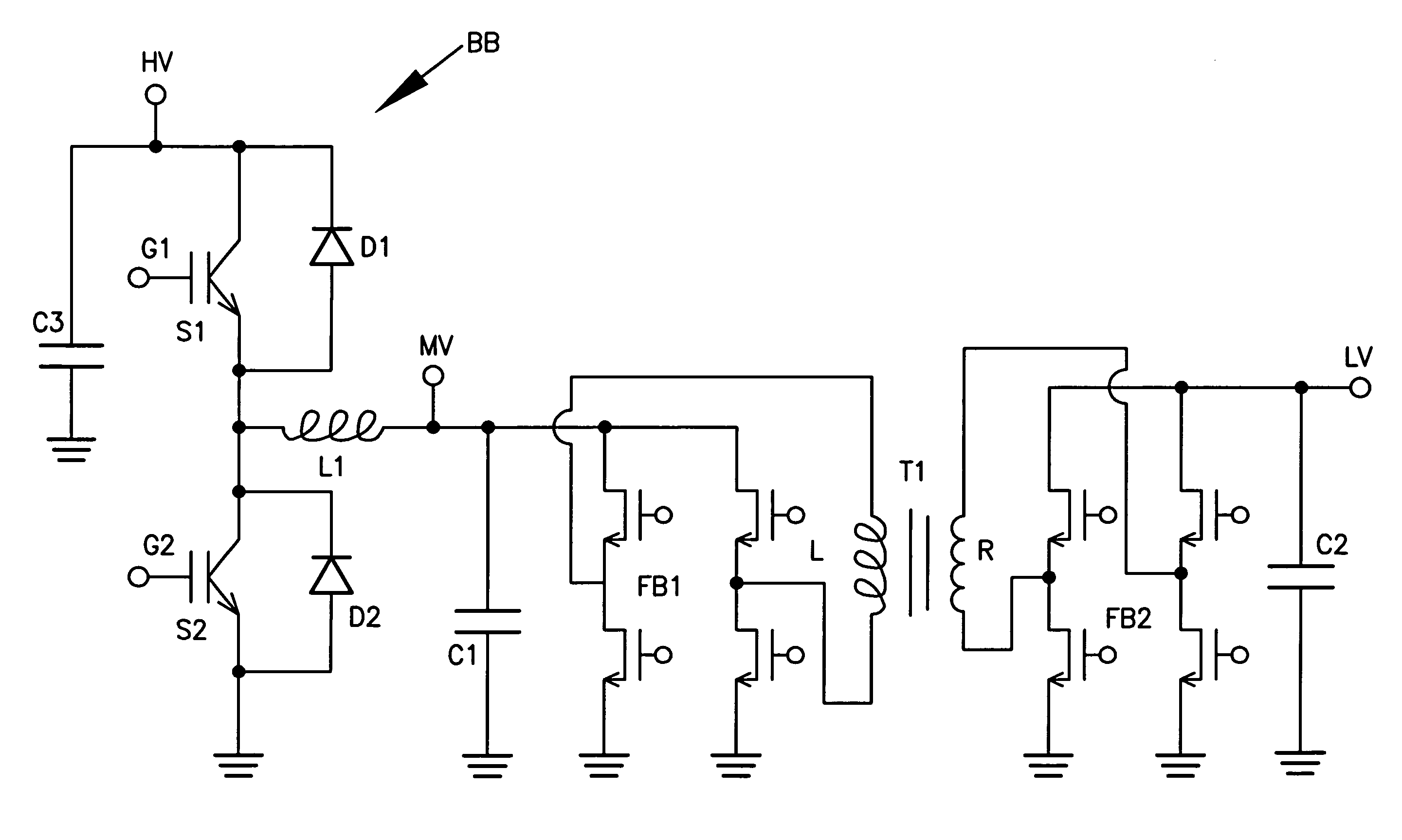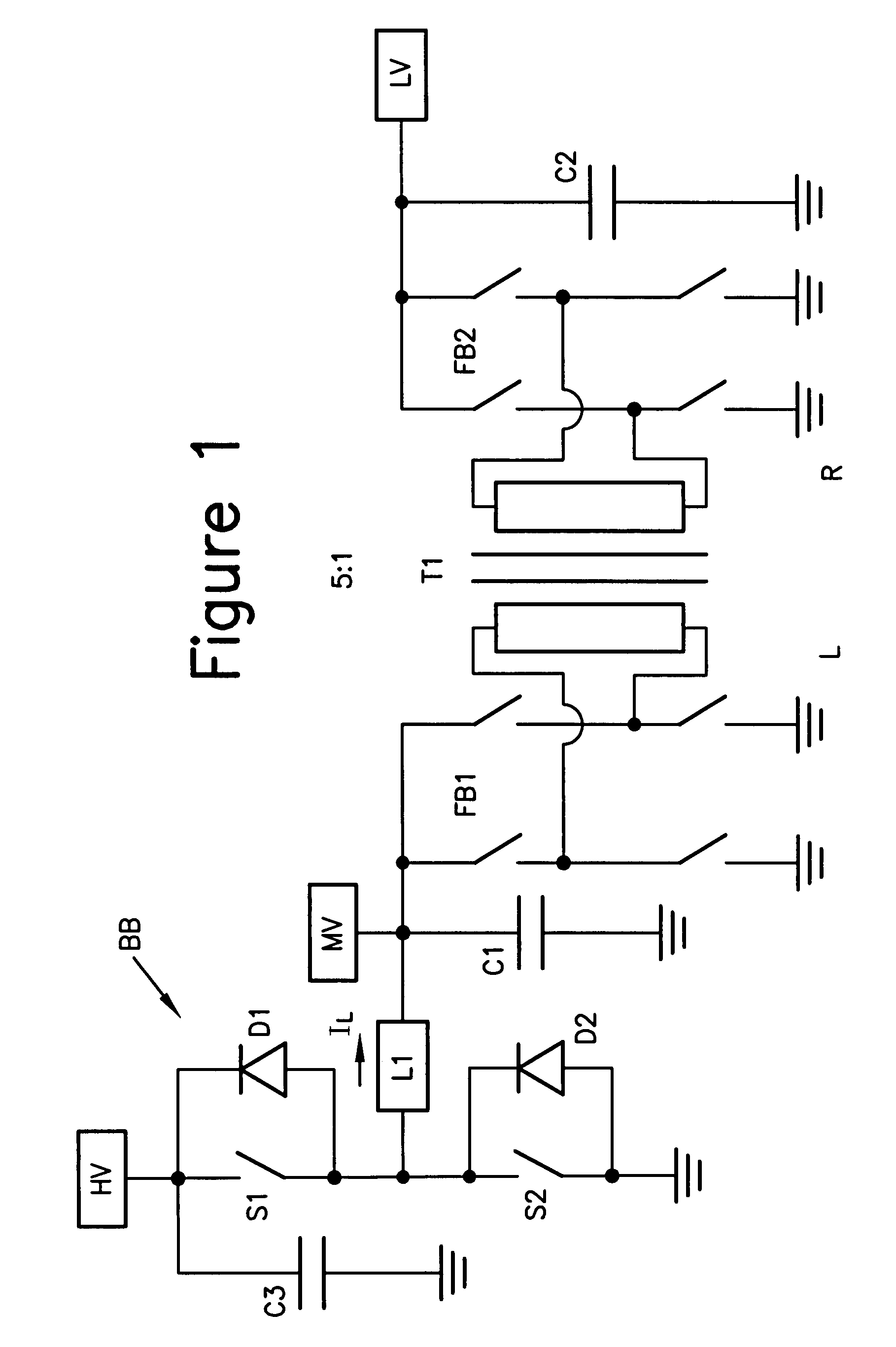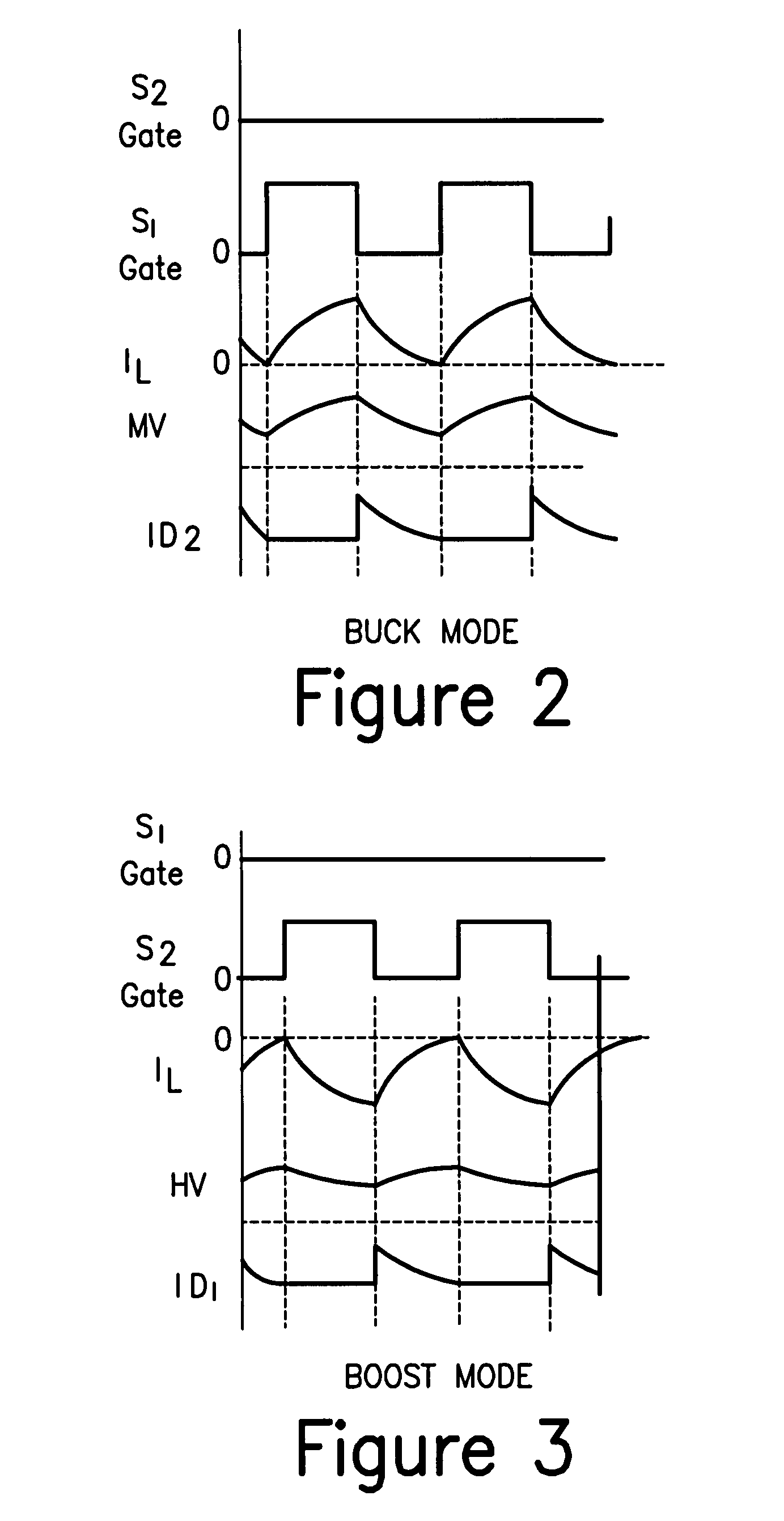Bi-directional isolated DC/DC converter
a converter and bi-directional technology, applied in the direction of electric variable regulation, process and machine control, instruments, etc., can solve the problems of galvanic separation, classical isolated converters that use transformers and do not offer bi-directionality, etc., and achieve the effect of wide high voltage and low voltage side regulation rang
- Summary
- Abstract
- Description
- Claims
- Application Information
AI Technical Summary
Benefits of technology
Problems solved by technology
Method used
Image
Examples
Embodiment Construction
[0013]With reference now to FIG. 1, the bi-directional converter of the invention comprises a transformer T1 having, for example, a turns ratio of, for example, 5:1 from the winding designated L to the winding designated R thereby providing a voltage step down function going from left to right and a step up function going from right to left. On the winding L side, a full bridge FB1 is connected across the winding. On the winding R side, a full bridge FB2 is connected across the winding. The switches of the bridges may be MOSFETs. The low voltage (LV) side has a capacitor C2 connected thereacross. A capacitor C1 is connected across the full bridge FB1 and establishes a bus MV or medium voltage bus.
[0014]A bi-directional buck / boost converter BB is provided between the high voltage bus HV and the bus MV. The bi-directional buck / boost converter BB may be realized with two fast 600 volt IGBTs S1 and S2 and their anti-parallel connected diodes D1 and D2, plus the storage inductor L1. The ...
PUM
 Login to View More
Login to View More Abstract
Description
Claims
Application Information
 Login to View More
Login to View More - R&D
- Intellectual Property
- Life Sciences
- Materials
- Tech Scout
- Unparalleled Data Quality
- Higher Quality Content
- 60% Fewer Hallucinations
Browse by: Latest US Patents, China's latest patents, Technical Efficacy Thesaurus, Application Domain, Technology Topic, Popular Technical Reports.
© 2025 PatSnap. All rights reserved.Legal|Privacy policy|Modern Slavery Act Transparency Statement|Sitemap|About US| Contact US: help@patsnap.com



